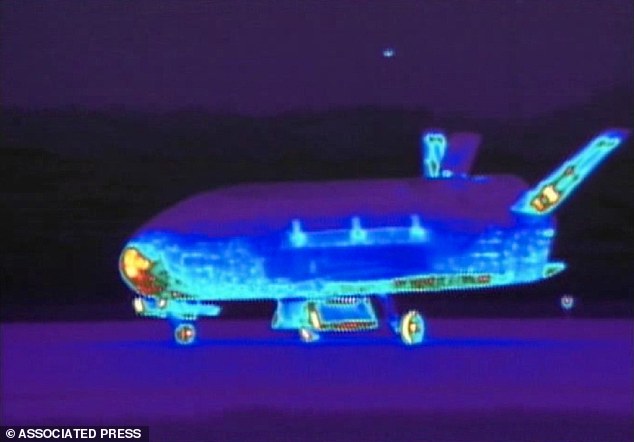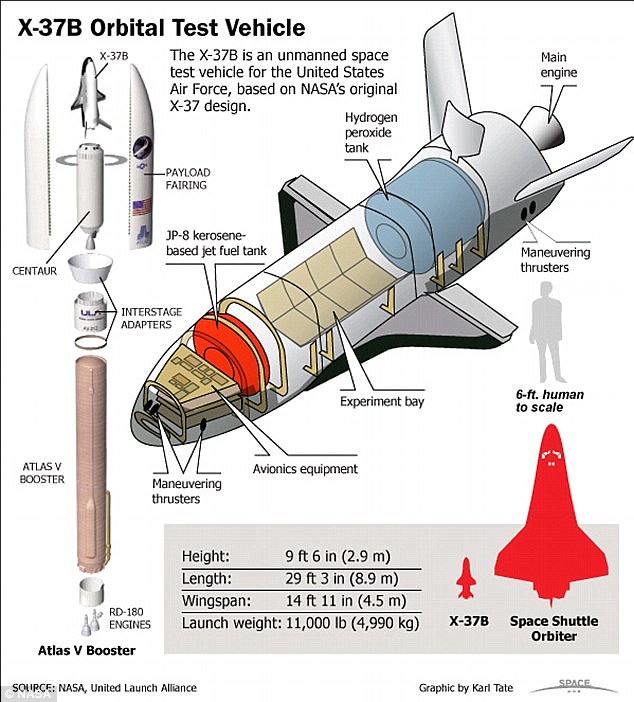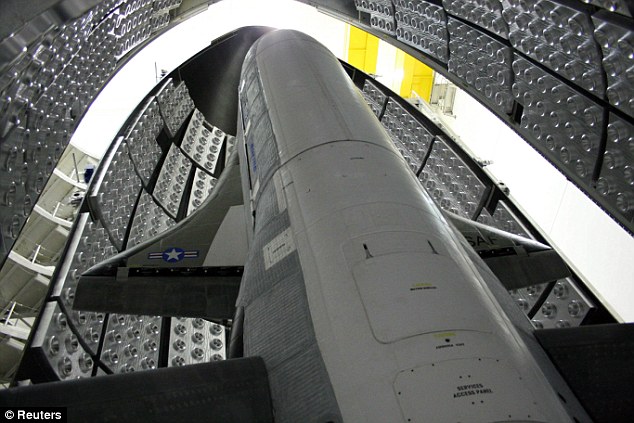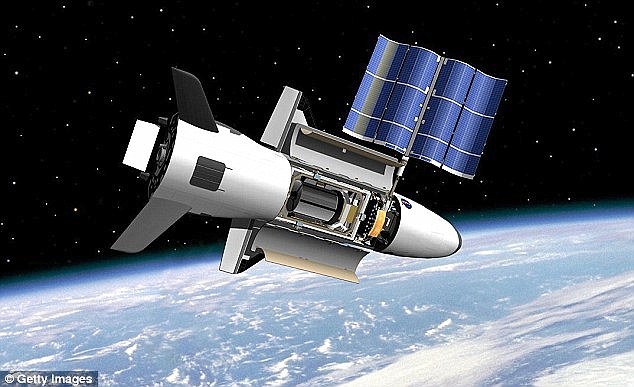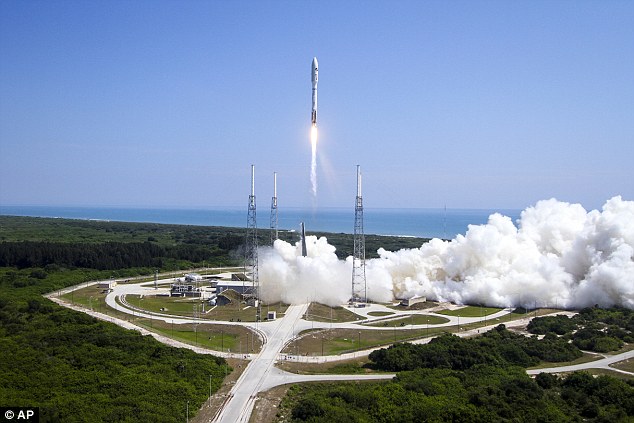mike2000 is back
ELITE MEMBER

- Joined
- Apr 12, 2015
- Messages
- 8,513
- Reaction score
- 19
- Country
- Location
The X-37b's big brother revealed: Boeing bags $6.6m contract to design reusable XS-1 robot spaceplane that will launch secret spy satellites and space weapons
Boeing has been awarded a $6.6m contract to design a cheap, reusable mini shuttle that can launch military satellites.
The small, planelike craft is known as the XS-1 program—short for 'eXperimental Spaceplane 1', and could blast off in 2019 on its first test mission.
It is hoped the craft could quickly launch small satellites that could defend against the growing threat of Russian and Chinese space weapons.
Scroll down for video
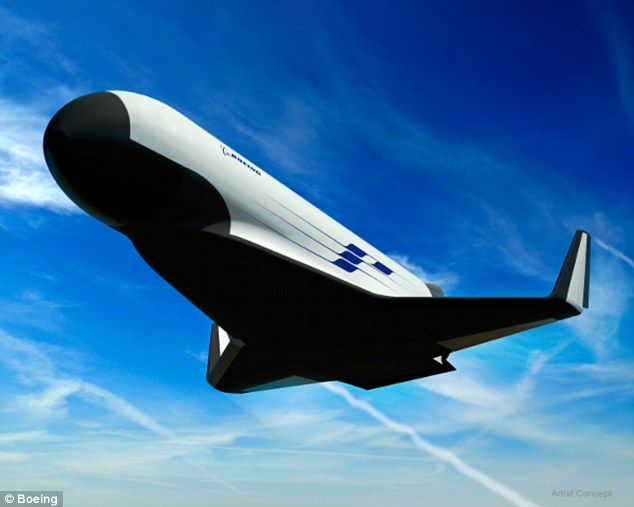
The small, planelike craft is known as the XS-1. It is hoped the craft could quickly launch small satellites that could defend against the growing threat of other world powers space weapons..
HOW IT WORKS
The reusable first stage launch vehicle will be capable of carrying and deploying an upper stage to launch small satellite payloads of 3,000 to 5,000 pounds (1,361 kg to 2,268 kg) into low-Earth orbit.
The booster would then return to Earth, where it could be quickly prepared for the next flight using methods similar to an airline jet.
XS-1 could 'create a new paradigm for more routine, responsive and affordable space operations,' according to DARPA, the military research arm heading the project.
The XS-1 is an airplane-like vehicle that can fly to the edge of Earth's atmosphere and quickly boost small satellites into orbit, and then land, refuel, load up another satellite, and take off again within 24 hours.
'In an era of declining budgets and adversaries' evolving capabilities, quick, affordable, and routine access to space is increasingly critical for both national and economic security,' DARPA said in a press release.
However, it has remained tight lipped about the latest contract.
'The Boeing Co., Huntington Beach, California, has been awarded a $6,587,447 modification (P00004) to previously awarded HR0011-14-9-0005 (Other Transaction), for the Experimental Spaceplane (XS-1) program,' the announcement of the deal says.
'The additional tasks, identified as Phase IB, will continue the development of the XS-1 demonstration concept, substantiating identified core component technologies, mitigating risk, developing a Technology Maturation Plan (TMP), and performing several demonstration tasks.
'The addition of the XS-1 Phase IB tasks brings the total cumulative face value of the agreement from $10,000,000 to $16,587,447.'
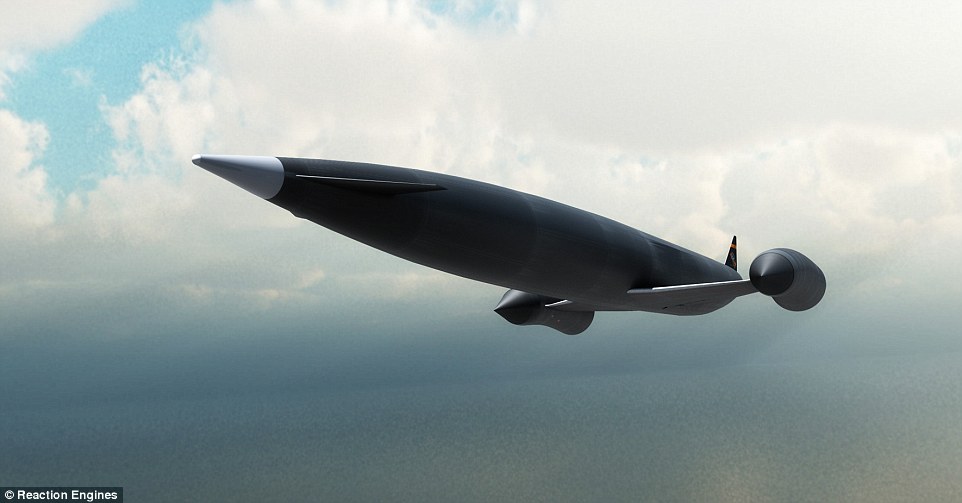
Boeing must complete its XS-1 design and test its basic technologies before August 2016.
DARPA wants an XS-1 prototype to perform a realistic trial mission no later than 2019.
After that, the Pentagon could decide to build XS-1s for regular use.

The reusable first stage launch vehicle will be capable of carrying and deploying an upper stage

Following the launch, the craft, which flies itself, simply returns to Earth.
'Developing a vehicle that launches small payloads more affordably is a priority for future U.S. Defense Department operations,' said Steve Johnston, director of Boeing's Phantom Works Advanced Space Exploration division when the oritinal funding was revealed.
'Boeing brings a combination of proven experience in developing launch systems and reusable space vehicles, along with unparalleled expertise in the development and fielding of highly operable and cost-effective transportation systems.'

The craft can then release its second stage

The upper stage can launch small satellite payloads of 3,000 to 5,000 pounds (1,361 kg to 2,268 kg) into low-Earth orbit.
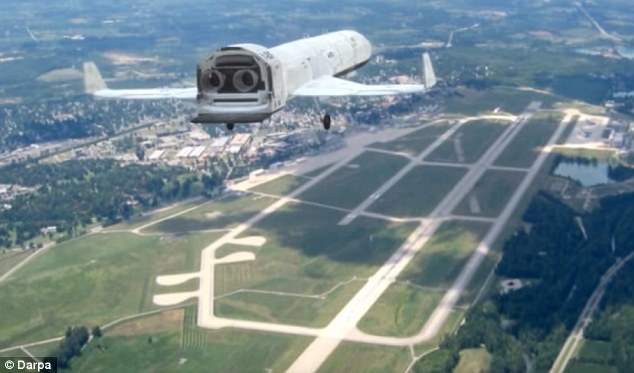
The booster would then return to Earth, where it could be quickly prepared for the next flight using methods similar to an airline jet.
NEXT STEPS
Boeing must complete its XS-1 design and test its basic technologies before August 2016.
DARPA wants an XS-1 prototype to perform a realistic trial mission no later than 2019.
After that, the Pentagon could decide to build XS-1s for regular use.
The firm was initially given a $4 million preliminary design contract, to work on a reusable first stage launch vehicle capable of carrying and deploying an upper stage to launch small satellite payloads of 3,000 to 5,000 pounds (1,361 kg to 2,268 kg) into low-Earth orbit.
'Our design would allow the autonomous booster to carry the second stage and payload to high altitude and deploy them into space.
'The booster would then return to Earth, where it could be quickly prepared for the next flight by applying operation and maintenance principles similar to modern aircraft.' said Will Hampton, Boeing XS-1 program manager.

The mystery test vehicle — essentially a technology test bed — is designed to orbit the Earth and then land like one of Nasa's old shuttles
'Drawing on our other innovative technologies, Boeing intends to provide a concept that uses efficient, streamlined ground infrastructure and improves the turnaround time to relaunch this spacecraft for subsequent missions.'
DARPA wants the new spaceplane to be able to boost a two-ton satellite into space every day for 10 days straight for less than $5 million per flight.
The craft is set to be larger than the X-37B robotic spaceplanes that Boeing built for the Air Force.
Masten Space Systems and Northrop Grumman had also drawn up XS-1 blueprints. DARPA awarded the three firms $4 million apiece to do that preliminary design work.
Boeing also enlisted Washington State-based rocket start-up Blue Origin to help with the XS-1's motor, ans is believed to be planning to use Blue Origin's BE-4 to power the XS-1.
Capable of producing more than half a million pounds of thrust, the BE-4 is amonster of an engine.
Earlier this year the US Air Force's top secret X-37B space plane was been caught on camera by a team of amateur astronomers.
The unmanned plane launched atop a United Launch Alliance Atlas V on May 20 on its fourth mission, but most of the details about its flight remain classified.
- XS-1 spacecraft will be far larger than secretive X-37b test plane
- Expected to use engine developed by Jeff Bezos's Blue Origin
- Will fly like a normal plane, releasing second stage to launch satellite
- Can then return to Earth and fly again within 24 hours
Boeing has been awarded a $6.6m contract to design a cheap, reusable mini shuttle that can launch military satellites.
The small, planelike craft is known as the XS-1 program—short for 'eXperimental Spaceplane 1', and could blast off in 2019 on its first test mission.
It is hoped the craft could quickly launch small satellites that could defend against the growing threat of Russian and Chinese space weapons.
Scroll down for video

The small, planelike craft is known as the XS-1. It is hoped the craft could quickly launch small satellites that could defend against the growing threat of other world powers space weapons..
HOW IT WORKS
The reusable first stage launch vehicle will be capable of carrying and deploying an upper stage to launch small satellite payloads of 3,000 to 5,000 pounds (1,361 kg to 2,268 kg) into low-Earth orbit.
The booster would then return to Earth, where it could be quickly prepared for the next flight using methods similar to an airline jet.
XS-1 could 'create a new paradigm for more routine, responsive and affordable space operations,' according to DARPA, the military research arm heading the project.
The XS-1 is an airplane-like vehicle that can fly to the edge of Earth's atmosphere and quickly boost small satellites into orbit, and then land, refuel, load up another satellite, and take off again within 24 hours.
'In an era of declining budgets and adversaries' evolving capabilities, quick, affordable, and routine access to space is increasingly critical for both national and economic security,' DARPA said in a press release.
However, it has remained tight lipped about the latest contract.
'The Boeing Co., Huntington Beach, California, has been awarded a $6,587,447 modification (P00004) to previously awarded HR0011-14-9-0005 (Other Transaction), for the Experimental Spaceplane (XS-1) program,' the announcement of the deal says.
'The additional tasks, identified as Phase IB, will continue the development of the XS-1 demonstration concept, substantiating identified core component technologies, mitigating risk, developing a Technology Maturation Plan (TMP), and performing several demonstration tasks.
'The addition of the XS-1 Phase IB tasks brings the total cumulative face value of the agreement from $10,000,000 to $16,587,447.'

Boeing must complete its XS-1 design and test its basic technologies before August 2016.
DARPA wants an XS-1 prototype to perform a realistic trial mission no later than 2019.
After that, the Pentagon could decide to build XS-1s for regular use.

The reusable first stage launch vehicle will be capable of carrying and deploying an upper stage

Following the launch, the craft, which flies itself, simply returns to Earth.
'Developing a vehicle that launches small payloads more affordably is a priority for future U.S. Defense Department operations,' said Steve Johnston, director of Boeing's Phantom Works Advanced Space Exploration division when the oritinal funding was revealed.
'Boeing brings a combination of proven experience in developing launch systems and reusable space vehicles, along with unparalleled expertise in the development and fielding of highly operable and cost-effective transportation systems.'

The craft can then release its second stage

The upper stage can launch small satellite payloads of 3,000 to 5,000 pounds (1,361 kg to 2,268 kg) into low-Earth orbit.

The booster would then return to Earth, where it could be quickly prepared for the next flight using methods similar to an airline jet.
NEXT STEPS
Boeing must complete its XS-1 design and test its basic technologies before August 2016.
DARPA wants an XS-1 prototype to perform a realistic trial mission no later than 2019.
After that, the Pentagon could decide to build XS-1s for regular use.
The firm was initially given a $4 million preliminary design contract, to work on a reusable first stage launch vehicle capable of carrying and deploying an upper stage to launch small satellite payloads of 3,000 to 5,000 pounds (1,361 kg to 2,268 kg) into low-Earth orbit.
'Our design would allow the autonomous booster to carry the second stage and payload to high altitude and deploy them into space.
'The booster would then return to Earth, where it could be quickly prepared for the next flight by applying operation and maintenance principles similar to modern aircraft.' said Will Hampton, Boeing XS-1 program manager.
The mystery test vehicle — essentially a technology test bed — is designed to orbit the Earth and then land like one of Nasa's old shuttles
'Drawing on our other innovative technologies, Boeing intends to provide a concept that uses efficient, streamlined ground infrastructure and improves the turnaround time to relaunch this spacecraft for subsequent missions.'
DARPA wants the new spaceplane to be able to boost a two-ton satellite into space every day for 10 days straight for less than $5 million per flight.
The craft is set to be larger than the X-37B robotic spaceplanes that Boeing built for the Air Force.
Masten Space Systems and Northrop Grumman had also drawn up XS-1 blueprints. DARPA awarded the three firms $4 million apiece to do that preliminary design work.
Boeing also enlisted Washington State-based rocket start-up Blue Origin to help with the XS-1's motor, ans is believed to be planning to use Blue Origin's BE-4 to power the XS-1.
Capable of producing more than half a million pounds of thrust, the BE-4 is amonster of an engine.
Earlier this year the US Air Force's top secret X-37B space plane was been caught on camera by a team of amateur astronomers.
The unmanned plane launched atop a United Launch Alliance Atlas V on May 20 on its fourth mission, but most of the details about its flight remain classified.


